Wallpapers Gone Wild: Innovative Startups Have Made The ’70s Decor Staple Cool Again
Designer Katie Deedy vividly remembers the moment her parents took her to pick out her own wallpaper design. Flipping through traditional polka dot and floral patterns, she settled on a graphic Mickey Mouse print in black and white.
“I thought it was the coolest wallpaper ever,” she says. “Everything else looked the same … the most exciting thing was Mickey.”
It was a distinct purchase, but one that would foreshadow her career two decades later. Today, Deedy runs a successful independent wallpaper brand called Grow House Grow. The Brooklyn-based company caters to tastes resembling that of the young Deedy: modern, unexpected, with a touch of whimsy. Among their many options, you’ll find monkeys in red vintage bathing suits, colorful Japanese paper lanterns, or strong narrative-inspired designs—like their collection honoring forgotten female scientists in history. That one is a bestseller.
“I try to make pattern-work that is quirky, unique, and interesting but that is also long-lasting,” she says. Deedy doesn’t do trendy; she prefers design with a story attached, likening it to antique collecting or saving photographs.
“[A story] gives it additional appeal,” she says. “We have this desire to create environments around us that have compelling stories.” At the same time, it’s still a home decor stable that, above all, is meant to be aesthetically pleasing. “I want it to be pretty and I want you to like it, but I also want it to add something to your space.”
Founded in 2008 with only Deedy’s bartending savings, Grow House Grow lost money before a bit of press in the New York Times in 2009 jump-started the business. From the third year on, Deedy doubled her earnings every year. Her designs are even available at the popular decor retailer Anthropologie.
Deedy’s success is accompanied by others in the same sphere. A demand for inventive and interesting wallpaper is growing, with big brands, home decorators, and new direct-to-consumer companies catering to modern tastes.
“Over the past few years, there has definitely been a resurgence in wallpaper,” says interior designer Justin DiPiero of HomePolish, a startup that offers personalized interior design services by the hour. “It is the easiest way to add impact and design detail to a space. You get a huge bang for your buck.”
HomePolish designed over 10,000 homes and offices nationwide in the last three years. The startup has witnessed improvements not only in the variety of patterns available, but also in advanced technology. “Wallpaper these days is made for easy installation as well as removal,” DiPiero says. “You no longer have to worry about damaging your walls or keeping the paper up forever.” DiPiero points to the the rise of temporary wallpaper, which gives clients the ability to add the color and pattern they want, without the commitment. Brands like Chasing Paper offer fun and retro-inspired removable options that, according to DiPiero, “are perfect for the indecisive or those of us who rent.”
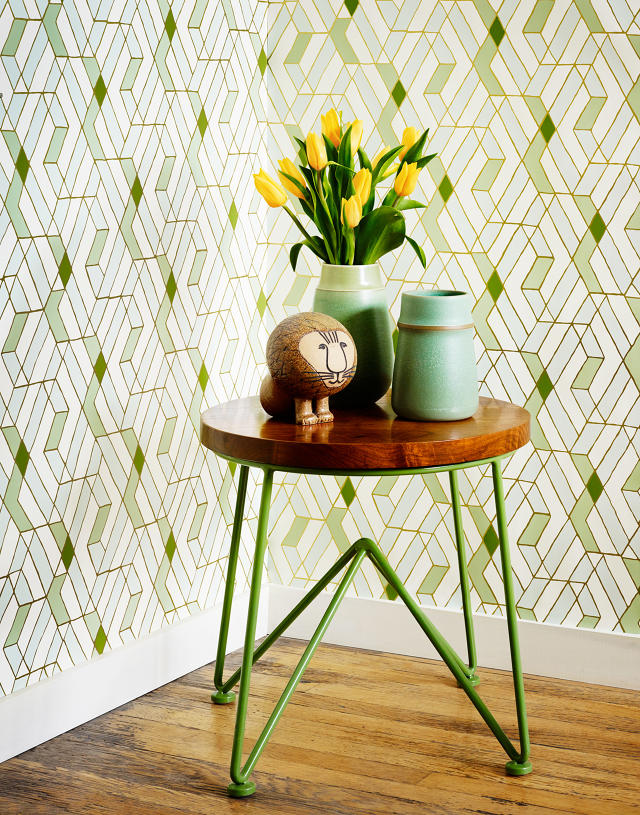
Home decor lovers don’t need to choose between dowdy old designs, or even live with them for that long. As Deedy recalls, the U.S. “went through decades of really bad wallpaper. The stuff in my kitchen was a yellow with a barfy green, or an orangey floral.”
Now there are startups giving new life to grandma’s interior staple. Many come from Brooklyn. Farrow & Ball specializes in classic, timeless designs. Krane Wallpaper’s whimsical patterns are inspired by Korean folk art. Flat Vernacular offers something a little bit more funky. Bradbury & Bradbury focuses on historic patterns from the 1880s through 1960s, including the Victorian print from the foyer of Disneyland’s Haunted mansion. All these innovative companies, says Deedy, helped revitalize something that was until recently painfully passé.
“It’s becoming modernized,” she says. “The market is getting more saturated with unique designs.”
Another label gaining traction is Hygge & West, a direct-to-consumer company that acts as a wallpaper-artist incubator, collaborating with designers and artists for exclusive runs of papers. Founded in 2008 by Aimee Lagos and Christiana Coop, it currently boasts 157 SKUs and is known for illustrative prints, like their best-selling daydream print by artist Julia Rothman.
“We work with a different artist or influencer on each collection, so we have a really wide range of aesthetics within our products because we want each collection to reflect the person who created it,” Lagos says. She pointed to this year’s International Contemporary Furniture Fair, an important design trade show which is seeing an uptick in their category.
“It was really interesting to see all the small wallpaper companies that are starting up,” she says. “It used to be just us and a handful of people out there doing it and now it seems like every year there’s more and more people entering it and more and more variety. It’s really exciting to see the industry as a whole grow that much.”
Hygge & West has seen 60% growth in last two years. The company plans to further extend its line to new categories like fabrics and shower curtains. But not because they see wallpaper in any way slowing down.
“Wallpaper is definitely a growing market,” says Lagos, who sees this as less of a trend and more of a mainstay design element. “It’s here to stay.”
What’s behind the wallpaper interest, beside the influx of new options? For one, the cost. New technology permits easier printing for outlets, no longer dependent on silk-screen machines. Another factor is social media. Designers’ Instagram accounts and Pinterest boards have inspired newfound curiosity for the category. Consumers can’t necessarily afford everything they see in an expertly staged photo shoot, but they can adopt certain elements. Wallpaper is one of the most affordable and personal ones.
“Social media has taken off so much in the last few years, so there are so many more people that see images of [home decor],” says Hygge & West cofounder Christiana Coop. “It gets into people’s minds a lot faster, whereas before you would just [be limited to] a decor magazine.”
There’s also the celebrity factor. Mindy Kaling proudly boasted her office’s navy and red floral wallpaper (by Serena & Lily) on the cover of Domino. Kourtney Kardashian showed off her Calabasas home’s textured walls for Architectural Digest. There are also the star tie-ins and collaborations, which repeatedly sell out.
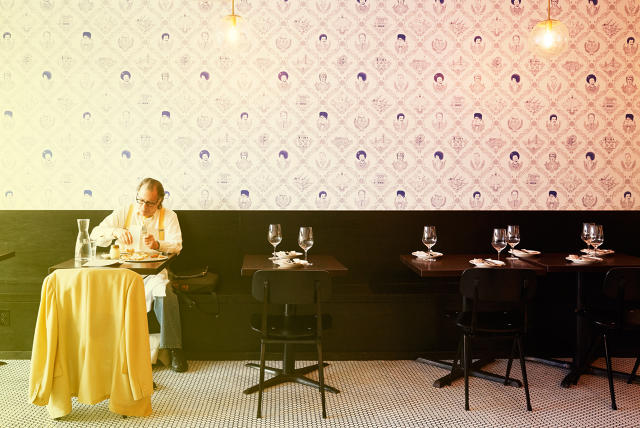
Brooklyn-based Flavor Paper recently teamed up with the musical comedy troupe The Lonely Island (which includes Brooklyn Nine-Nine actor Andy Samberg) and artist Matt Ritchie. Together they crafted a Bay Area-themed toile paper that incorporates city legends such as rapper Too $hort, culinary icon Alice Waters, former 49ers quarterback Joe Montana, and various San Francisco landmarks.
“We’re changing the way people look at wallpaper,” Flavor Paper founder Jon Sherman says. “It was always a company goal to take the traditional aspects of wallpaper and inject a modern angle with humor and wit.”
One of the company’s biggest hits is a Brooklyn-centric toile print commissioned by Mike Diamond of the Beastie Boys. It represents the borough, but in an unexpected manner: New York pigeons, the Coney Island Cyclone, Hasidic Jews, and Notorious B.I.G.
New York City homeowner Michelle Greenspan chose the print for her foyer because she wanted something “relaxed” and not too stuffy. “Guests walk in and immediately stop to say how cool the paper is,” she says. “They don’t know why they like it since it appears to be a traditional toile. Then I get them in real close and show them Biggie and the flying Nathan’s hot dogs.”
“People gravitate toward something that incorporates things that are really familiar to them that they wouldn’t expect to see on a wallpaper with that historic vibe,” Sherman says. For Flavor Paper, it could be as simple as adding metallics or vivid colors or changing the scale. “We try to cover every genre of wallpaper out there and then release a very contemporary version.”
Sherman got his start in 2004 by releasing three tone-on-tone prints, with one “wild” version of bright opaque colors that they didn’t expect to sell, but produced for fun. That’s the one people ended up responding to the most. “They were just waiting for someone to do something different with wallpaper,” Sherman says. Flavor Paper’s revenue increased by nearly 60% last year and 30% year over year for the past three years.
These days, they’re collaborating with Lenny Kravitz, who can offer a “fresh perspective,” Sherman says, as well as artist and Pee-Wee’s Playhouse creator Wayne White. He recently created a traditional French scenic with a twist: a boat sailing along on a calm ocean until the boat catches on fire and a captain panics. They were also approached by the Andy Warhol Foundation.
“We’re injecting silliness in there,” Sherman says. “We’re taking these very serious, somber, traditional arts and making them fun again….that’s what wallpaper needed.”
It’s also what consumers are looking for—wallpaper that makes a statement. This might come in the form of a story, something funny or ironic, or via the face of a beloved rapper or underappreciated scientist. Unlike a lamp or a sofa, wallpaper can be a quick notice-me item that makes a statement about your identity. It’s a temporary tattoo for your home.
“It can so quickly change the feel of a room and it’s such a fun medium to play with,” says Hygge & West’s Coop. “There are endless possibilities of what we can make, what colors to use and its visually so exciting and provides such a punch [to a room].”
Those endless possibilities are only multiplying, if the current market is any indicator. Shoppers will now find anything they want, whether it’s vintage-inspired, futuristic, or just plain out-there.
“If you went in today to any shop, the absolute amazing range of what’s available is mind-boggling,” Deedy says. “If you want a wallpaper of purple elephants eating rows of corn, I swear it probably exists.”
Grow House Grow’s female scientist collection includes a print dedicated to 19th century entomologist Mary Ward.
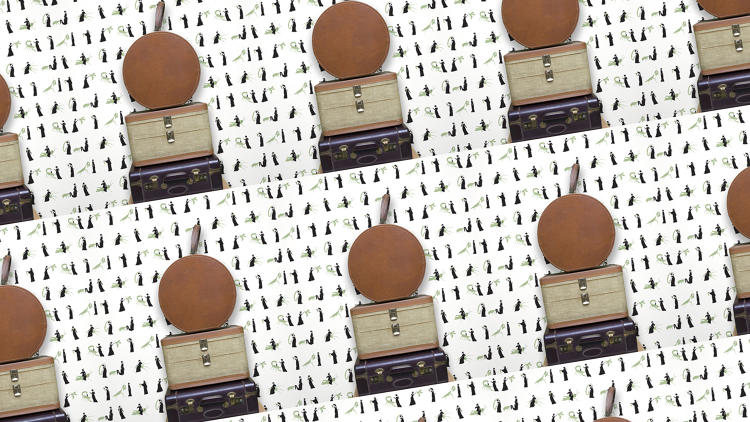
Grow House Grow’s Alexandria print features an “eye of knowledge” pattern as a nod to the ancient Royal Library of Alexandria.
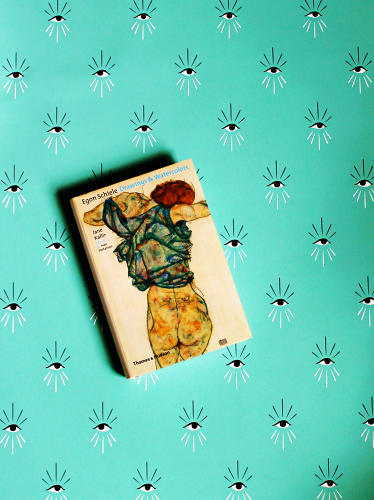
Mike Diamond of the Beastie Boys designed a Brooklyn-inspired toile wallpaper that incorporates the NYC subway, Hasidic Jews, and Notorious B.I.G.
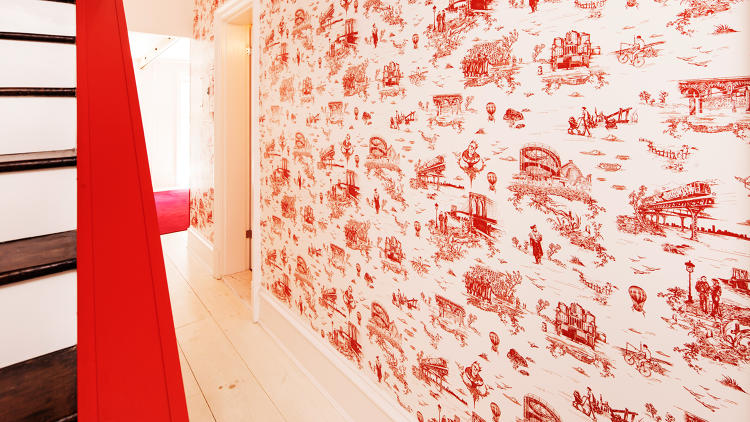
According to Hygge & West, pineapples “symbolize friendly hospitality and a warm welcome to guests.”
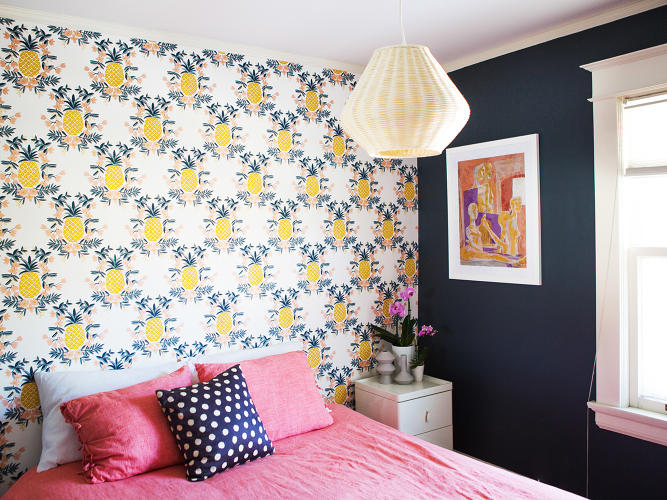
Murals Wallpapers’ latest collection features marble-print wallpaper captured through HD photography.
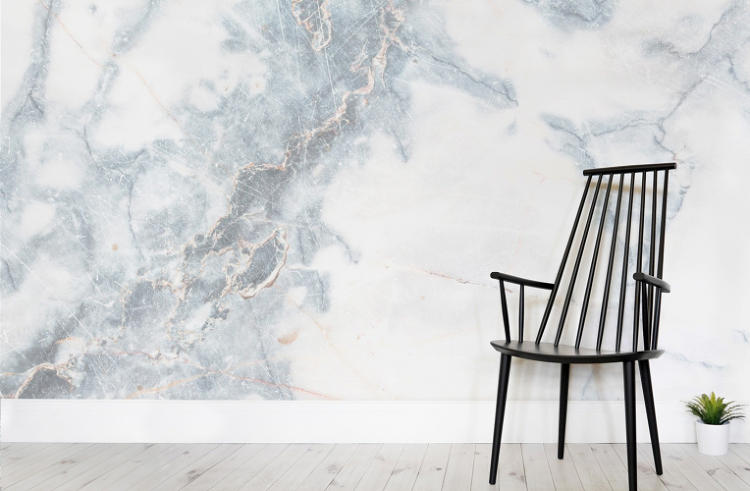
Fast Company , Read Full Story
(42)








